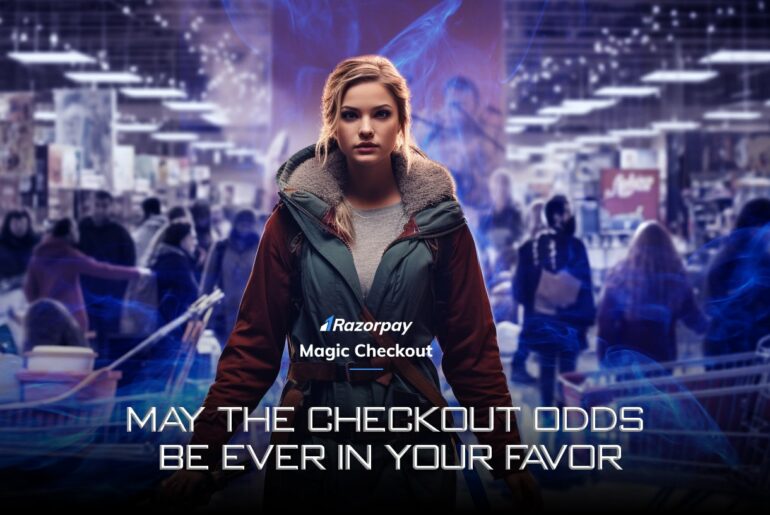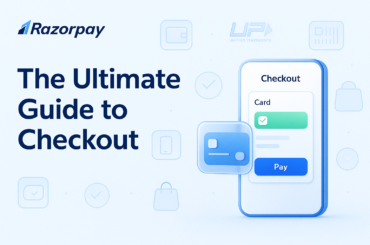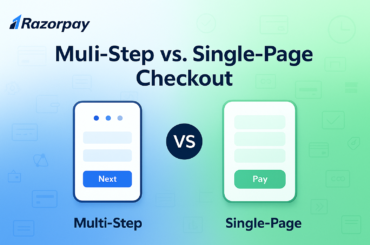Welcome all to the arena of the e-commerce landscape where every click, every scroll, and every decision becomes a heart-pounding battle for supremacy. This is a realm where online businesses are called upon to summon their inner Katniss Everdeen to encounter an unyielding adversary: cart abandonment.
In this digital arena, the stakes are high, and addressing cart abandonment is not just a choice; it’s a battle for e-commerce survival. As we embark on this journey, we’ll explore the significance of this challenge, uncover the reasons behind it, and unveil the expert strategies that can turn the tide in favor of victory.
May the odds be ever in your favor as we navigate the world of cart abandonment, just like Katniss navigated the Hunger Games arena. Let the strategic games commence!
Table of Contents
What is Cart Abandonment?
 At its core, cart abandonment is the digital equivalent of a window shopper picking up products they like but leaving the online store without making a purchase. It’s the moment when potential buyers fill their virtual shopping carts with products, only to abandon them at the virtual checkout counter.
At its core, cart abandonment is the digital equivalent of a window shopper picking up products they like but leaving the online store without making a purchase. It’s the moment when potential buyers fill their virtual shopping carts with products, only to abandon them at the virtual checkout counter.
 Cart Abandonment Statistics
Cart Abandonment Statistics
- The cart abandonment rate hovers at an average of 70.19%, as reported by the Baymard Institute. This statistic is derived from a compilation of 48 studies on shopping cart abandonment, revealing a range spanning from 56% to 81%.
- For desktop e-commerce sessions, Barilliance highlights an average cart abandonment rate of 73.07%, which interestingly appears to be the lowest among various device types.
- Mobile users face the highest cart abandonment rate, with a staggering 85.65% of shoppers failing to complete their purchases when navigating through the mobile interface.
- The sectors most susceptible to cart abandonment are home furnishing (90.50%), automotive (85.97%), and jewelry (84.49%), where potential buyers often abandon their carts.
- Visitors arriving at e-commerce websites via social media platforms exhibit the highest cart abandonment rate across all sources, reaching a significant 91%.
Related Read: What is Split Payment, And How Does it Work?
Cart Abandonment: Unmasking the Reasons
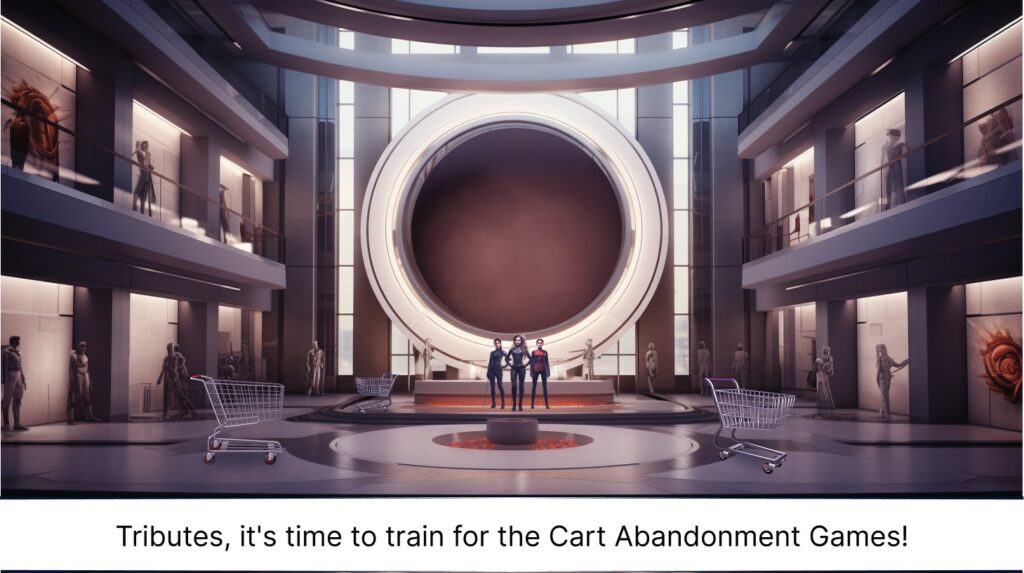
| Cart Abandonment Reason | Cart Abandonent Rate (in %) |
| Additional costs, including shipping fees, taxes, or other added charges | 47% |
| Website is asking to create an account | 25% |
| Delivery is slow, doesn’t meet shoppers’ expectations for prompt receipt. | 24% |
| Distrust in website’s security regarding credit/debit cards | 19% |
| Lengthy or complicated checkout process | 18% |
| Unable to view or calculate the total order cost upfront | 17% |
| Return policy unsatisfactory | 16% |
| Frequent website crashes and loading problems | 14% |
| Preferred payment option is not available | 11% |
| Credit card payment is declined during checkout | 6% |
Business Impact of High Cart Abandonment Rate
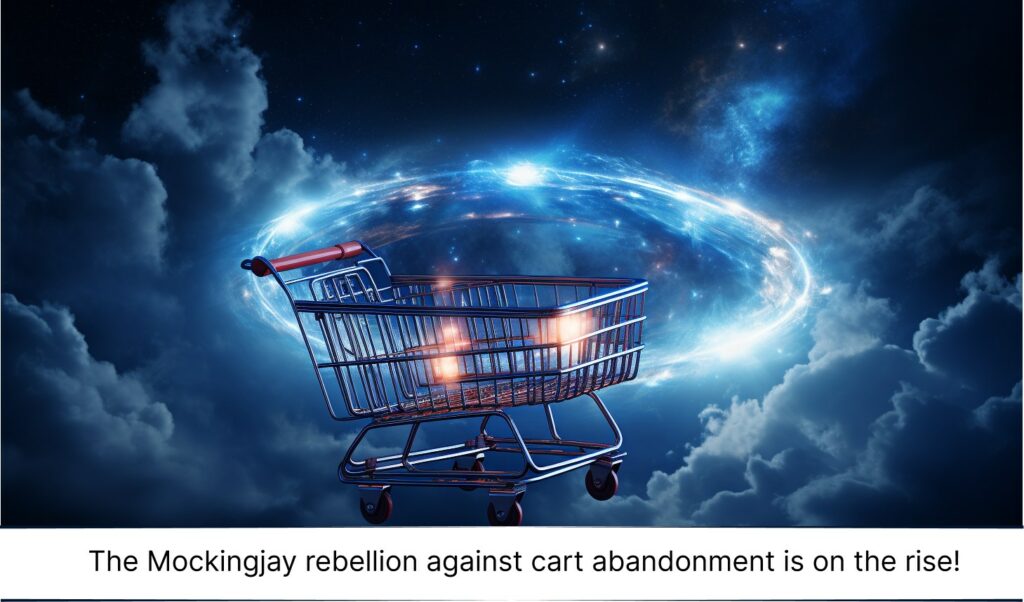
- “May the Odds Be Ever in Your Favor” – Uncertain Sales: A high cart abandonment rate can result in lost sales, which is like losing valuable resources in a survival game.
- “War of Attrition” – Increased Marketing Costs: Constantly battling cart abandonment means you’re spending more on marketing and customer acquisition, which can strain your budget.
- “District 13 Syndrome” – Brand Reputation Damage: High cart abandonment can tarnish your brand’s reputation, as shoppers view your online store as unreliable and untrustworthy.
- “Mutant Tracker Jackers” – Lost Customer Insights: Abandoned carts represent missed opportunities for gathering valuable customer data and insights, making it harder to understand your customers’ preferences and behaviors.
- “Capitol’s Burden” – Resource Drain: Retrieving abandoned carts and converting them into sales can be time-consuming and resource-intensive, diverting resources from other critical business activities.
From Abandoned Carts to Conversion Triumphs: E-Commerce Case Studies
 Learning from the experiences of similar D2C brands is invaluable, which is why this section will cover three case studies, unraveling the challenges that stood in the way and the strategic victories that paved their path to triumph.
Learning from the experiences of similar D2C brands is invaluable, which is why this section will cover three case studies, unraveling the challenges that stood in the way and the strategic victories that paved their path to triumph.
Brand 1: Fire-Boltt
About Fire-Boltt
Fire-Boltt is India’s top smartwatch brand, ranked fourth globally. Founded in 2015 by Arnav and Aayushi Kishore in Noida, this homegrown company is known for its innovative technology and international expansion into the UAE and Southeast Asia. Backed by Savex Technologies, India’s third-largest tech distributor, Fire-Boltt, led by CEO and founder Arnav Kishore, aims to transform health, fitness, and sports through wearable technology.
Challenges
Fire-Boltt faced two main challenges: a high cart abandonment rate due to a cumbersome D2C checkout process, impacting sales, and soaring Return to Origin (RTO) rates, reaching as high as 60%, caused by poor address quality.
Furthermore, over 50% of customers preferred Cash-on-Delivery (COD), leading to operational complexities, logistical challenges, delayed settlements, and increased RTOs.
Solution
Fire-Boltt revolutionized its checkout process with Magic Checkout, enhancing it with features such as 5x faster checkout, pre-filled contact and shipping details, an intuitive interface, and a prominent “Buy Now” button. Furthermore, Fire-Boltt harnessed Magic Checkout’s capabilities in COD intelligence and real-time address validation to curtail its RTO rate from a staggering 60% to a remarkable 40% within just three months, offering an unparalleled shopping experience.
Result
Enabling Magic Checkout on Fire-Boltt’s online store resulted in a remarkable impact, including a 50% increase in the order conversion rate, a significant 33% reduction in Return to Origin (RTO) rates, and a notable 25% increase in the share of prepaid orders.
To read the complete Fire-Boltt case study, click here.
Brand 2: VS Mani & Co.
About VS Mani
VS Mani & Co. is a food and beverage company specializing in authentic South Indian packaged foods. Their product range includes coffee decoction, instant coffee, filter coffee, snacks, and spices. They serve a loyal customer base of over 100,000 through Amazon, eCommerce apps, and physical stores in Bangalore. Their mission is to become a prominent South Indian brand with a national and international presence.
Challenges
VS Mani & Co. used to have a lengthy checkout procedure, demanding customers to input various details, including contact, delivery, and payment information, every time they wished to complete a purchase. Typically, this process consumes anywhere from 1.5 to 3 minutes of a customer’s time.
This time-consuming requirement proved burdensome, often causing potential shoppers to abandon their purchases at the final stage. As the cart abandonment rate increased for V.S. Mani & Co., the order conversion rate decreased.
Solution
VS Mani & Co. underwent a checkout transformation with Magic Checkout, introducing an era of simplicity and speed. With this innovative solution, the hassle of multiple steps and extensive form-filling became a thing of the past. Magic Checkout’s automatic population of contact, delivery, and payment details saved precious time off the process, drastically reducing cart abandonment rates and ushering in a significant uptick in order conversions for VS Mani & Co.
Result
The significant reduction in cart abandonment resulted in a 27% increase in the order conversion rate.
To read the complete V.S Mani & Co case study, click here.
Brand 3: Barosi
About Barosi
Barosi is an authentic Indian food brand offering a wide range of products, from ghee and honey to pickles, jaggery, and more. They connect customers with local, sustainable farms, ensuring every bite supports rural communities and India’s culinary heritage. Barosi is committed to quality and sustainability, from farm to doorstep, making each product a testament to the hard work of local farmers.
Challenges
Barosi faced a few challenges. Their lengthy checkout process led to high cart abandonment rates. Additionally, they grappled with high return-to-origin (RTO) rates and a significant preference for cash-on-delivery (COD) among customers, causing operational hassles and logistical challenges.
Solution
Barosi strategically employed Razorpay Magic Checkout to combat cart abandonment, resulting in a swift and efficient order completion process that reduced abandonment rates substantially. Magic Checkout’s ability to disable COD for high-risk users not only streamlined operations but also left customers more satisfied, marking a significant turning point in Barosi’s cart recovery efforts.
Result
The decrease in cart abandonment rates led to a remarkable 35% increase in the order conversion rate.
To read the complete Barosi case study, click here.
Identification of a Common Factor to Reduce Cart Abandonment
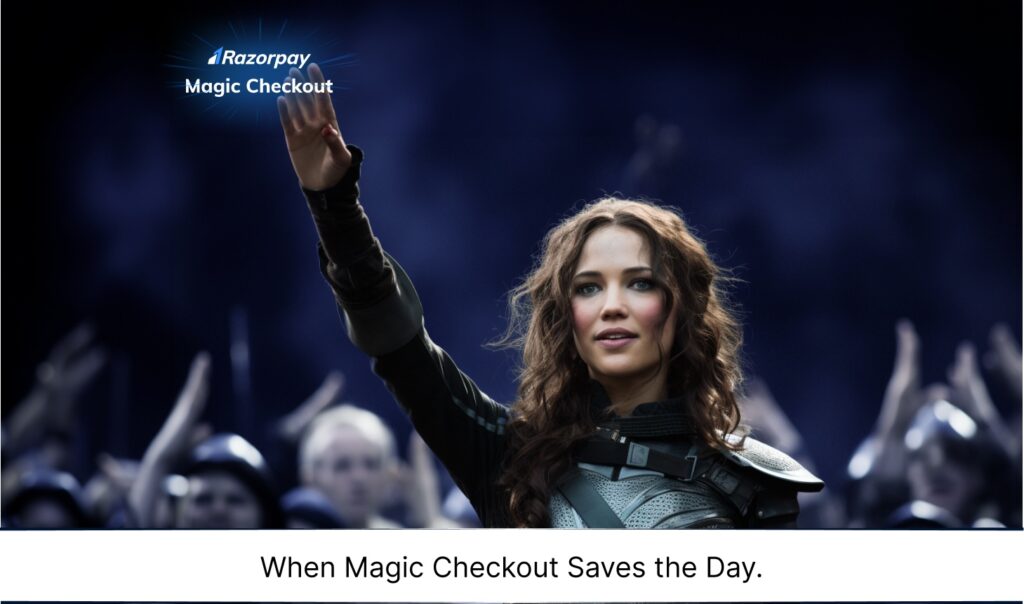 Across the three case studies of Fire-Boltt, V.S Mani & Co., and Barosi, a common factor emerges as the driving force behind reducing cart abandonment rates – Razorpay’s Magic Checkout.
Across the three case studies of Fire-Boltt, V.S Mani & Co., and Barosi, a common factor emerges as the driving force behind reducing cart abandonment rates – Razorpay’s Magic Checkout.
Magic Checkout redefines the conventional checkout process, offering customers a revolutionary one-click checkout experience. Magic Checkout stands out by eliminating the need for users to go through time-consuming form-filling and account creation processes, simplifying the entire purchase journey.
Effectiveness of Magic Checkout
- Reduced Cart Abandonment: Magic Checkout effectively reduced cart abandonment rates across all case studies. For example, Ecentric witnessed a 40% increase in order conversion rates due to significantly lower cart abandonment.
- 5x Faster Checkout: Magic Checkout’s one-click approach made the checkout process five times faster, providing users with a swift and convenient experience. This contributed to a substantial reduction in cart abandonment rates.
- Streamlined Payment Experience: Magic Checkout offers an enhanced payment experience by presenting the most relevant payment options at the top, reducing user hesitation during the checkout process.
- Addressing COD Challenges: Magic Checkout effectively managed challenges related to Cash-on-Delivery (COD) orders, enhancing operational efficiency and reducing the Return-to-Origin (RTO) rates. For instance, Fire-Boltt experienced a drop in their RTO rate from 60% to 40% within three months.
- Data-Driven Insights: Magic Checkout utilizes proprietary algorithms and data analysis to identify high-risk users, block COD for them, and optimize the checkout process for greater efficiency and customer satisfaction.
- Rapid Adoption: The success stories of these case studies underscore the rapid adoption of Magic Checkout as a transformative tool in overcoming cart abandonment challenges, driving higher order conversions, and improving the overall customer purchase journey.
Insights from Our Product Marketing Manager
Recognizing the significant impact of cart abandonment on an e-commerce venture, we conducted an insightful interview with Devesh Gupta, our Senior Product Marketing Manager at Razorpay. Devesh possesses comprehensive knowledge of cart abandonment intricacies, and his valuable insights on this topic can significantly benefit any e-commerce business seeking practical solutions.
Question 1: Why do customers abandon their shopping carts?
Answer: Customers abandon their carts for various reasons. The most common ones include a lack of trust, affordability concerns, high shipping turnaround time (TAT), unexpected hidden charges such as shipping or service fees, a lengthy or complicated checkout process, concerns about payment security, and the desire to compare prices with competitors. Addressing these pain points can help reduce cart abandonment rates.
Question 2: How does cart abandonment impact an e-commerce business’s revenue?
Answer: Cart abandonment can have a significant negative impact on an e-commerce business’s growth. When customers abandon their carts, potential sales are lost, leading to decreased revenue. Additionally, the cost of acquiring customers (CAC) is wasted if they don’t complete their purchase, hampering growth.
Question 3: What strategies can e-commerce businesses employ to reduce cart abandonment rates?
Answer: To combat cart abandonment, businesses should focus on improving the end-to-end shopping experience. This includes pricing your product right and providing discounts and EMI options, ensuring they are discoverable on product pages, simplifying the checkout experience, offering transparent pricing, providing multiple payment options, and instilling trust and confidence by showcasing product reviews, testimonials, and even prominent trust badges and security measures. Additionally, implementing solutions like Razorpay’s Magic Checkout can significantly reduce cart abandonment rates.
Question 4: Are there any specific trends or factors contributing to cart abandonment in the current e-commerce landscape?
Answer: Yes, the e-commerce landscape is constantly evolving. Factors contributing to cart abandonment today include the importance of social proof and reviews, speedy delivery timelines, well-designed and mobile-optimized website and shopping experience, and the need for a seamless checkout experience. It’s essential for businesses to adapt to these trends and provide a customer-centric experience.
Question 5: Why should e-commerce businesses adopt solutions such as Magic Checkout to combat cart abandonment and boost conversion rates?
Answer: Magic Checkout offers a seamless one-click checkout experience that simplifies the checkout, discounting, and payment process for customers. It includes features such as better coupon discovery and application, an advanced COD suite, the ability to convert COD payment methods to prepaid, offering versatile payment options all on one screen, and most importantly, providing brands access to 200Mn+ users in the Razorpay network by prefilling their contact, address, and payment details, and providing shoppers with a 5X faster checkout experience.
What makes it even more appealing is its track record of success, endorsed by renowned brands like Fire-Boltt, Amazfit, and VS. Mani & Co. Magic Checkout, which has consistently proven its reliability and effectiveness in reducing cart abandonment rates and significantly boosting conversion rates. It streamlines the entire checkout journey, ensuring a frictionless shopping experience and encouraging customers to complete their purchases.
Resources and Tools
- Razorpay Magic Checkout: The ultimate one-click checkout solution, designed to turbocharge the customer checkout experience and deliver a remarkable 5x speed boost while significantly elevating conversion rates and slashing cart abandonment rates.
Check out the Razorpay Magic Checkout website for details: Click here.
- Avada Email Marketing and SMS: A comprehensive tool for cart abandonment recovery and customer engagement through omnichannel outreach, including email marketing, SMS, and more.
Check out the Avada Email Marketing and SMS app on Shopify: Click here.
- CK: WhatsApp Chat & Abandoned: CK’s WhatsApp Chat & Abandoned streamlines cart recovery and customer communication. Automate recovery messages, build trust with order notifications, and provide instant support, all through WhatsApp.
Check out the CK: WhatsApp Chat & Abandoned app on Shopify: Click here.
- Extendons: Mini Cart for WooCommerce. Elevate your WooCommerce store with a Mini Cart, curbing cart abandonment. Offer users instant access to cart details, ensuring transparency as they shop and streamlining the checkout process.
Check out the Extendons: Mini Cart for WooCommerce app on WooCommerce: Click here.
- Reasons for Shopping Cart Abandonment with data: Click here.
- 49 Cart Abandonment Rate Statistics 2023: Click here.
- 10 Reasons Cart Abandonment is Hurting Your Sales: Click here.
- Online Shopping Cart Abandonment Rate in Selected Industries: Click here.
Final Words
Cart abandonment is a fierce opponent, but you have the tools to conquer it. High cart abandonment rates can drain your resources and damage your brand’s reputation, but you can turn the tide with the right strategies. Case studies like Fire-Boltt, V.S. Mani & Co., and Barosi demonstrate the power of Razorpay’s Magic Checkout in reducing cart abandonment and boosting order conversions.
Now, it’s your turn to take action. Stay updated with the latest trends and technologies, like Magic Checkout, to make a significant difference in reducing cart abandonment. May the odds be ever in your favor as you embark on your e-commerce journey!
In the world of e-commerce, cart abandonment is the Hunger Games. With strategy and determination, you can emerge as the Katniss Everdeen of conversions, conquering the odds and claiming victory.

